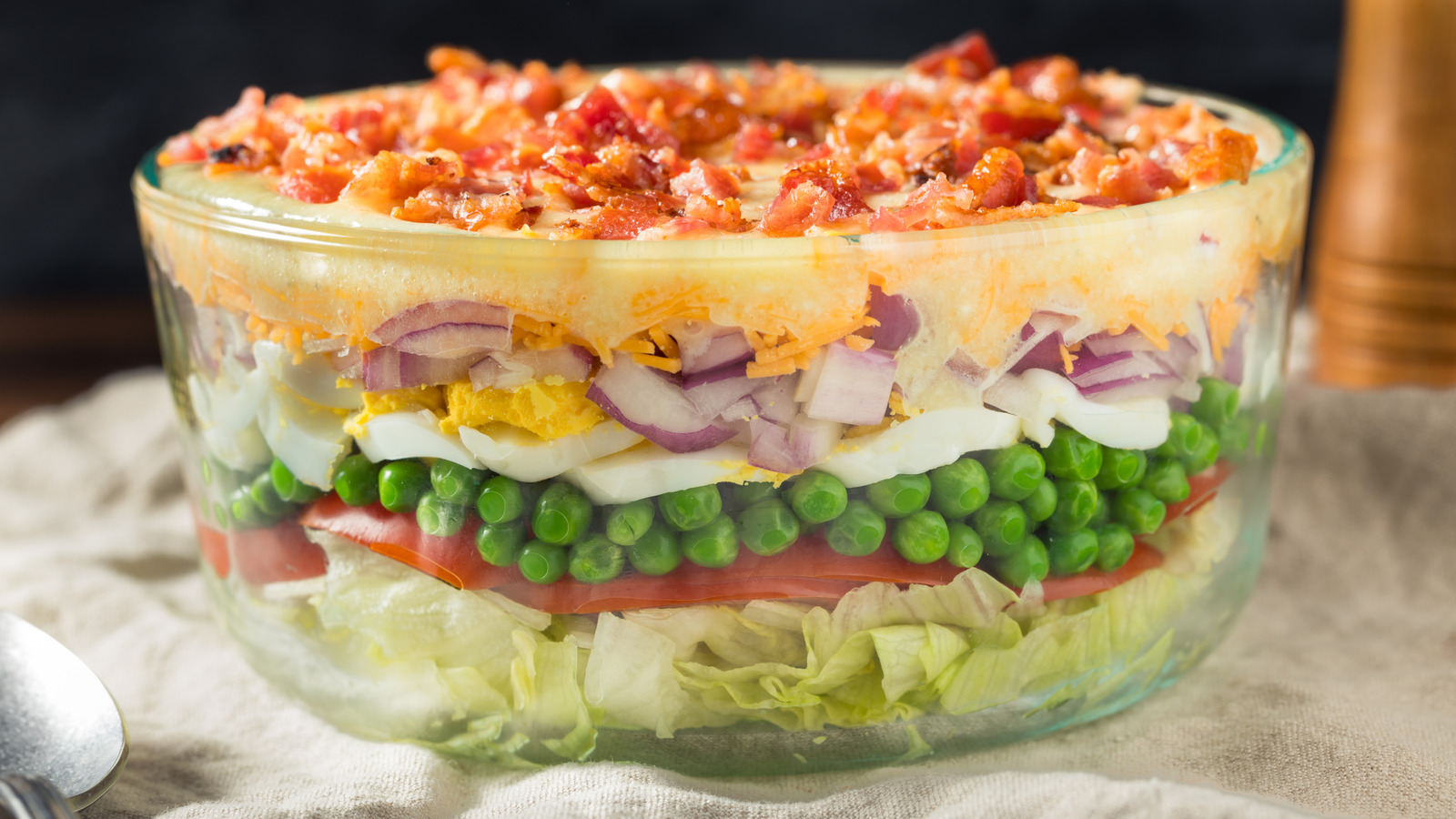
"Usually constructed from clearly demarcated layers of lettuce, tomatoes, onions, peas, bacon bits, and shredded cheese, this recipe had some wiggle room based on what the chef wanted to include. Alternate versions might include hard-boiled eggs, shredded carrots, or chopped ham. Basically, if your salad had seven layers, guests probably found it acceptable. The final layer was often a sweetened mayonnaise dressing, like whipped cream atop a layered parfait."
"The other key component to a seven-layer salad is the serving bowl, which must be clear glass. That way, you can see all of the layers clearly through the side, like a trifle. Each layer serves its own purpose, from the crunchy lettuce to the salty bacon to the fresh peas. The mayonnaise dressing adds a tangy, sweet creaminess that binds it all together."
"Because the ingredients in a seven-layer salad can vary, this dish sometimes suffered from unpredictability. Some recipes, for example, might have included too much mayonnaise, while others added too much sugar to the dressing, making it unpalatable. Some people have been making the same version since the 1970s, though, and it's a staple at many family gatherings in the Midwest and South. The recipe itself seems to date all the way back to the 1950s, when it was known as the seven-layer pea salad."
Potluck culture popularized a seven-layer salad composed of distinct layers such as lettuce, tomatoes, onions, peas, bacon bits, and shredded cheese, with many acceptable variations. Alternate ingredients often include hard-boiled eggs, shredded carrots, or chopped ham. A sweetened mayonnaise dressing frequently topped the layers, and a clear glass serving bowl showcased the layered presentation. Each ingredient contributed texture and flavor balance, while the mayo added creaminess. Variability in ingredient proportions sometimes produced uneven results. The recipe traces to the 1950s as a pea salad and remained common in Midwest and Southern gatherings through the 1970s before declining in popularity.
Read at Tasting Table
Unable to calculate read time
Collection
[
|
...
]